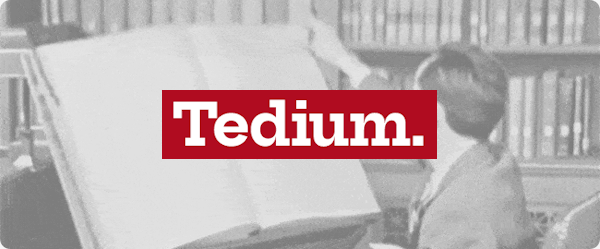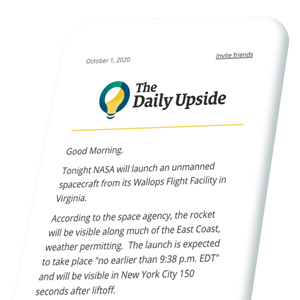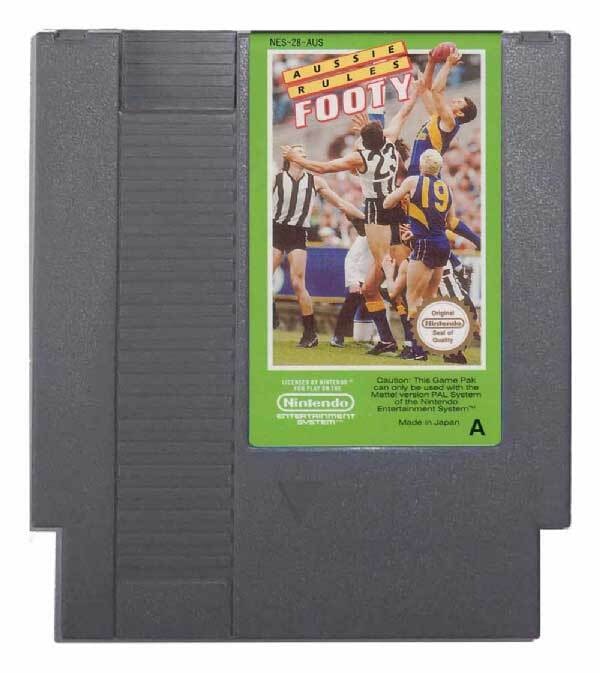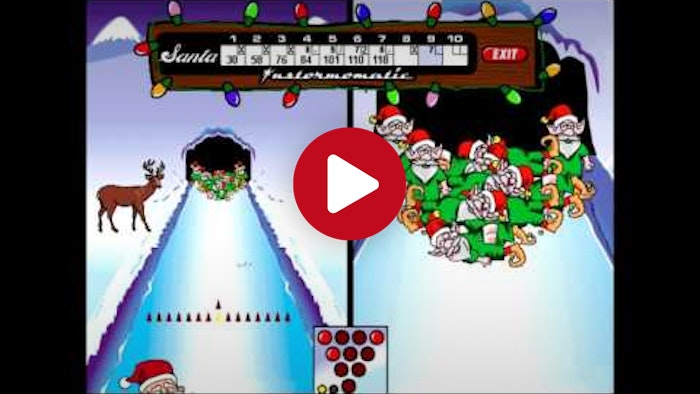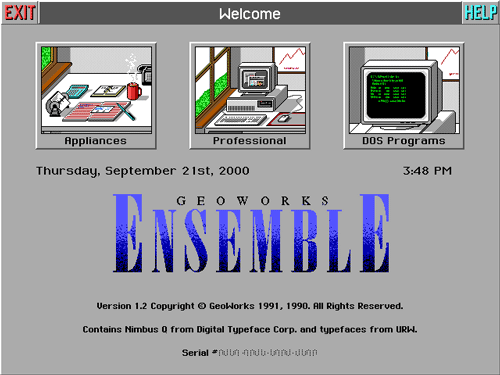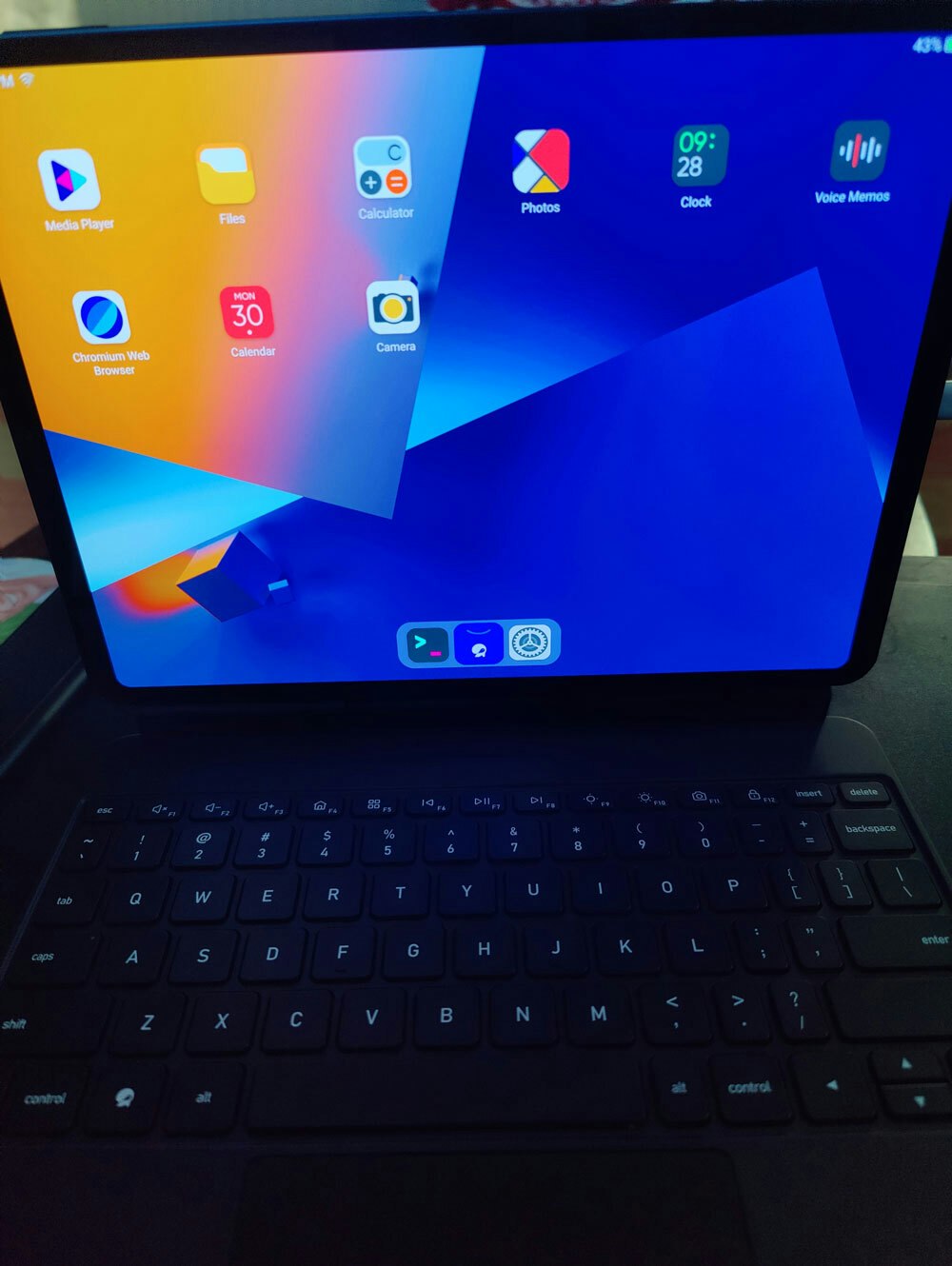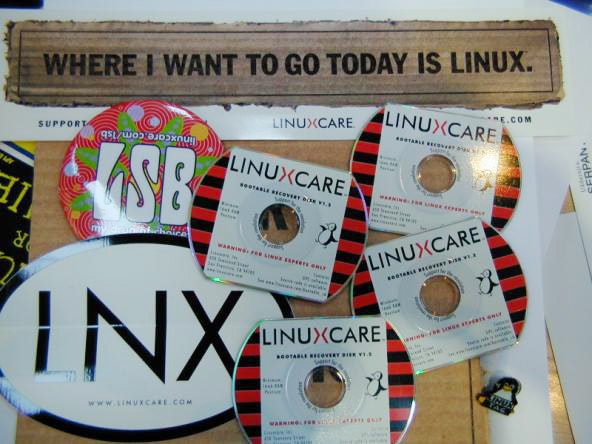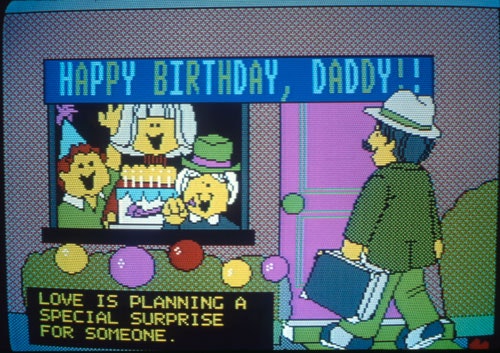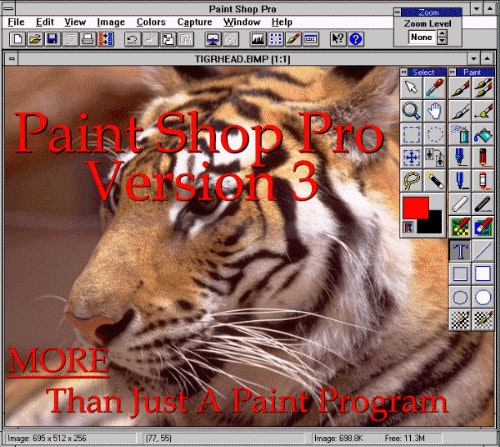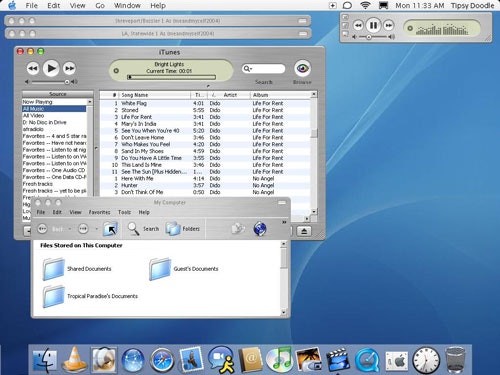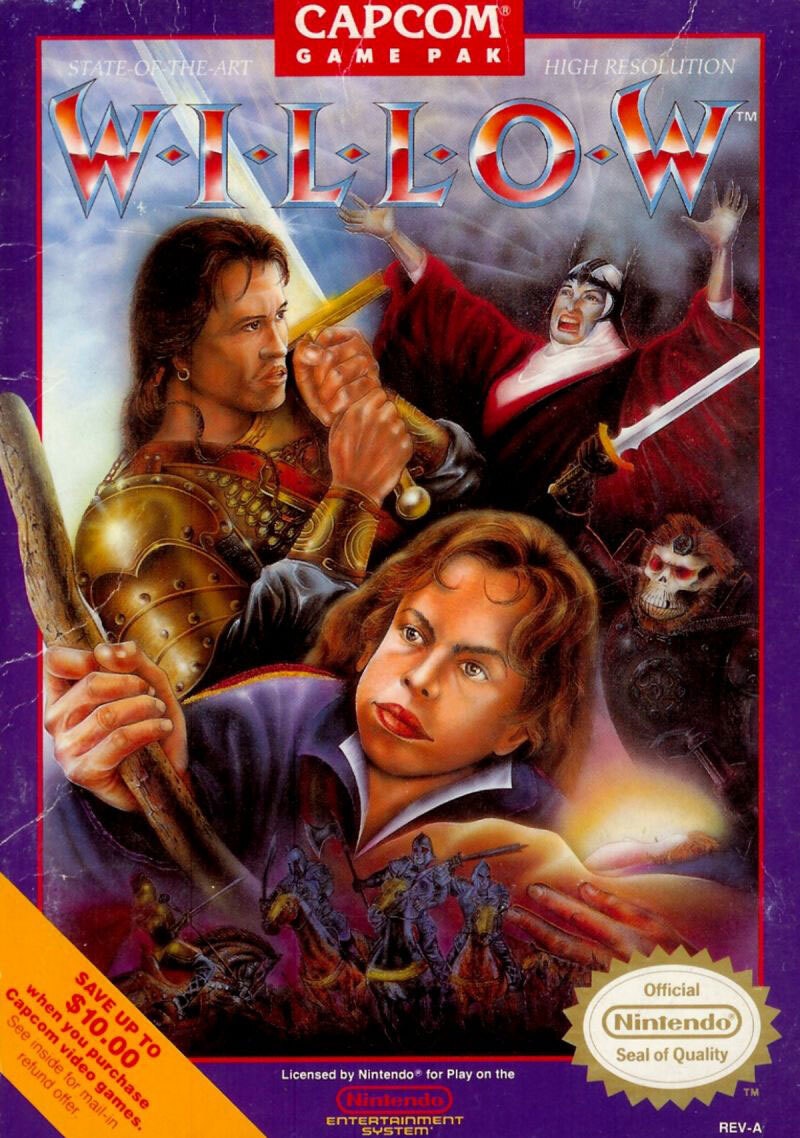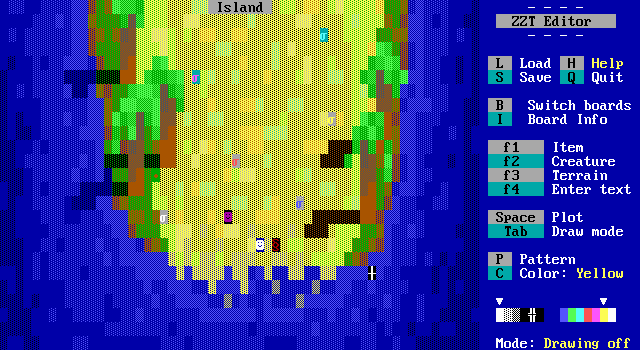| | (Brett Jordan/Unsplash) The Glossary of Tedium, vol. 1: SoftwareSoftware takes a lot of forms; it can start with a simple script, a evolve into an application, take the part of a utility player, or run the whole damn business. Software can be productive; it can be dangerous. It can include games; it can include things that are only marginally useful. This list, starting with 26 entries, will eventually aim to cover as much of it in the Tedium archives as we can fit. Any thoughts? Additions or suggestions? Bug us, and we’re happy to tweak. Anyway, let’s talk software.
ArcaOS A modern version of IBM’s OS/2 Warp, an operating system whose popular heyday was in the early 1990s. ArcaOS, developed by the software company Arca Note, LLC, is a continuation of the software, which found a surprising amount of use in embedded systems such as ATMs and even the New York City subway. That’s correct—nearly 30 years after OS/2 Warp first shipped, there’s still a company developing it for the handful of customers that are out there.
| | “Aussie Rules Footy,” one of just three Australia-only games sold for the NES. Beam Software A video game developer, based in Melbourne, Australia, that programmed many games for the Nintendo Entertainment System. Despite being based in a country that was a minor market for the NES, the company had a surprising influence on the console in the United States, developing 29 games for either the NES or Famicom, with most of its games never seeing release in its home country. (Two that did, the Australia-only releases International Cricket and Aussie Rules Footy, ended up being huge hits for Beam.) Beam was essentially interpreting American culture for American audiences in Australia.
Clover A bootloader tool, commonly used in Hackintosh use cases, that allows the machine to install extensions that boot MacOS. This tool, admittedly complex for normal users to understand, also has some great secondary use cases—for example, it can be used to boot from an NVMe drive on hardware that does not natively support the NVMe spec.
DoubleSpace The original name for a disk compression utility that was included with versions of MS-DOS 6. The software, which effectively compressed your entire drive to make more space to store your content, was riddled with bugs when it was initially launched, and worse, directly infringed on a patent owned by a competing company, Stac Electronics. A lawsuit ensued. (It was Microsoft’s first big controversy around bundling software with its OS, and yes, there would be others.) The software was eventually renamed DriveSpace, where it would eventually fade into obscurity thanks to the rise of Windows.
| | Elf Bowling An early example of a viral game, produced by a marketing company to help generate interest in its business. The concept proved controversial because of its distribution method—users shared the game not by distributing links, but by sending executable files directly through email. This practice drew the ire of security experts, which led to the game being falsely described as spam or a virus.
FreeHand An early vector drawing application which found wide popularity with graphic designers in the early years of the Macintosh. Initially produced by Aldus, it was sold off to Macromedia in 1994 in an attempt to keep the product alive after Aldus sold to Adobe. However, when Macromedia was itself bought out by Adobe in the mid-2000s, the company discontinued the product, leading to a class-action lawsuit by enthusiasts upset that the application was no longer being supported. Some graphic design old heads just don’t like Illustrator.
| | Geoworks A GUI shell for MS-DOS, one of a few of its kind, albeit one that had a lot of potential to put up a strong front against Microsoft Windows. Unfortunately for GeoWorks, a modernized version of the Apple II and C64-based GEOS operating system, all the software support went to Windows, which meant that it faded from the market beyond a handful of obscure use cases. (Of note: GeoWorks used the Motif layout language, much more commonly used in Linux environments.)
Haiku An open-source software project that aims to maintain the basis of the ’90s-era operating system BeOS into the modern day. The software, one of many operating systems that has maintained a presence into the present day, has been developed since 2001, but is currently in a beta mode.
IRIX The UNIX-based operating system at the center of Silicon Graphics’ proprietary MIPS workstations. IRIX, which utilizes the desktop widget toolkit Motif to manage its visual appearance, has maintained enthusiast interest into the modern day, but unlike many UNIX-y operating systems, is not open source, as Silicon Graphics’ current owner, Hewlett Packard Enterprise, has not done anything with the software since acquiring it in 2016.
| | The JingPad looked good, but … JingOS A tablet-based Linux distro, developed to work with the JingPad, as well as (briefly) tablet-based x86 PCs. The machine, the product of a Kickstarter, appeared to be promising with some limitations, but whose software fell off the face of the earth due to the company shuttering entirely. (But not before some people got their tablets.)
KaZaA A popular early peer-to-peer file downloading tool, used in the early 2000s, which made it possible to download software to your heart’s content, along with music and videos. (And viruses.) KaZaA famously was laden with spyware, which meant that the application required much care to safely use. The music industry developed alternatives to KaZaA, and once sued a 12-year-old girl for downloading a performance of “If You’re Happy and You Know It” using the service.
| | The Linuxcare business card distro proved a big hit at tradeshows. (via Slashdot) Linuxcare A company, launched in the 1990s, which developed a CD-ROM the size of a business card with a bootable version of Linux on it. While forgotten today, the idea was clever and won an audience among technical users, and helped pave the way for the Linux live CD to become more common.
MusicNet A proprietary music-streaming service, predating iTunes by a few years, that had the support of three of the five major labels of the era. Another service released around the same time, called PressPlay, was backed by the other two. Despite the wide interest in online music at the time (thanks, Napster) the two services failed to catch on, in part because of the tight restrictions on use, which made piracy look pretty attractive.
| | The obscure cable channel Genesis Storytime used NAPLPS. NAPLPS An early graphics language used in teletext and videotext settings, particularly in Canadian systems such as the Telidon system, but also finding uses outside of that. For one, it was used to display images on the obscure cable channel Genesis Storytime. For another, it was an important element of the Prodigy online service, which was operated by Sears and IBM.
OpenCore A bootloader tool designed to allow MacOS to boot on nonstandard machines. This tool, which has largely supplanted Clover in Hackintosh communities, is built with security in mind and has even made it easier for unsupported Macs to continue to run the latest version of MacOS. (Likely won’t hold that presence too far in the future, with Apple Silicon slowly pushing support away from Intel-based machines.)
| | Paint Shop Pro version 3 (via the JASC website, circa 1997) Paint Shop Pro A low-cost photo editing application for Windows PCs, originally published as shareware. It started as a side hustle: Its original developer, Robert Voit, worked as an airline pilot at the time he originally developed PSP, something reflected by the name of its parent company JASC Software (standing for Jets and Software Company, of course). To this day, Paint Shop Pro remains one of the most popular image-editing tools, though these days it’s sold by Corel.
QuarkXPress A desktop publishing application that became very popular in the 1990s, only to be usurped by Adobe’s InDesign in the early 2000s. Still sold today, it has never regained its crown from InDesign, in part because of a decision to slow-roll its support of Mac OS X upon its initial release, which soured goodwill with the graphic design community.
RAINMAN The name of the markup language that AOL used for its desktop interface in the 1990s. A content-management tool that is essentially to AOL’s interface what WordPress is to websites, the tool only became known to the public thanks to hackers that helped to draw attention to it.
| | A Mac OS X mockup theme dating to 2004. Note the aggressive use of brushed metal. (via WinCustomize) Stardock A technology company, which came up in from the OS/2 scene, that became famous during the 2000s for offering customization tools for various versions of Microsoft Windows. The software, which included WindowBlinds and ObjectDock, made it conceivably possible, for example, to make Windows XP look like MacOS.
Timbuktu An early MacOS-based remote access tool that made it possible for Mac users to control systems remotely. It was one of a few applications of its kind (Carbon Copy was a common tool for the PC of the era), and could work over both local networks and via modems. It did not support color in its initial versions, however.
Ubuntu Touch A version of the ultra-popular Linux distribution that is built for mobile devices, such as the PinePhone and the JingPad. This technology, while originally built by Ubuntu’s developer Canonical, was shelved after a crowdfunding effort failed to fund a phone built around the software. But because open source never dies, another organization, UBPorts, has maintained the software into the modern day.
Vampire Killer A game for the MSX computer platform, developed by Konami, that would be changed slightly and redeveloped on the Famicom and Nintendo Entertainment System, where it gained a far better known name—Castlevania. Later on, a developer created a patch for the game that made it much more like the NES version of the game.
| | Willow A 1988 fantasy movie directed by Ron Howard that directly inspired multiple games based on the franchise—most notably, a 1989 RPG-style game developed by Capcom for the NES that received good reviews despite being based on a film that only saw middling success. Akira Kitamura, the man who directed the Willow game for Capcom, also developed Mega Man.
XviD An open-source codec, based on the popular but proprietary DivX video codec, that is often used in the compression of large video files, often movies or TV shows sold in a DVD format. Despite not really being in the mainstream, the technology has gained something of a household name status because of its wide use on torrent websites.
Yggdrasil Linux/GNU/X The first Linux distribution made in a “Live CD” format, released in 1992, just a year after the release of the Linux kernel. The technology, while impressive for its time, had high requirements that limited its use outside of enthusiast circles—particularly a requirement that the machines have 8MB of RAM, at a time when it was common for many machines to have just 1MB.)
| | ZZT The first game produced by Tim Sweeney, the founder of Epic Games. The action-adventure game, utilizing colorful text-based IBM PC graphics and a design that was easily hackable, utilized the shareware model of creation. It sold more than 4,000 copies through the mail, proving a huge hit for Sweeney’s budding company. Less than a decade after ZZT’s creation, Epic would go on to develop Unreal, whose engine helped to redefine how video games were developed. More than a quarter-century after its creation, Epic would release Fortnite, an effective contrast of its roots. |
|
